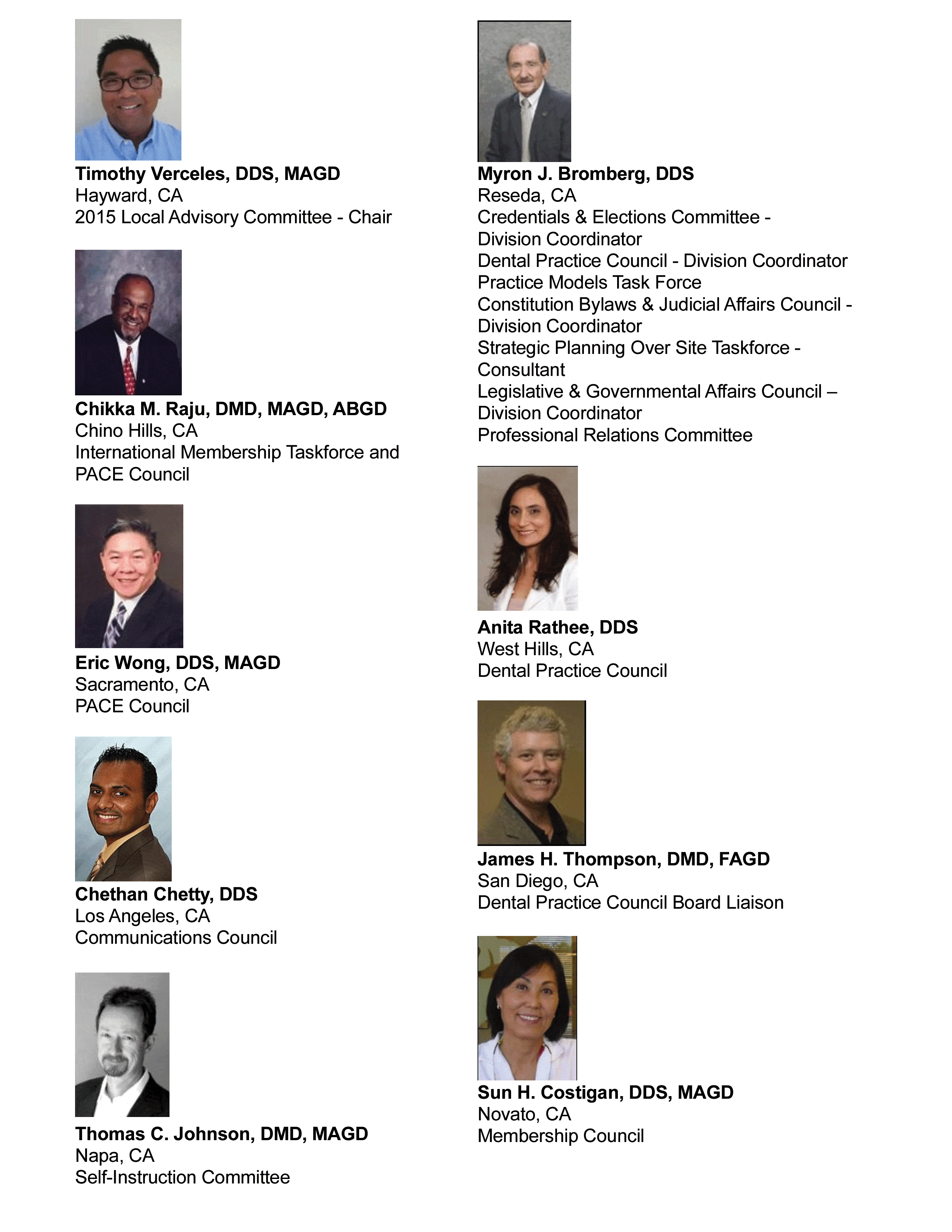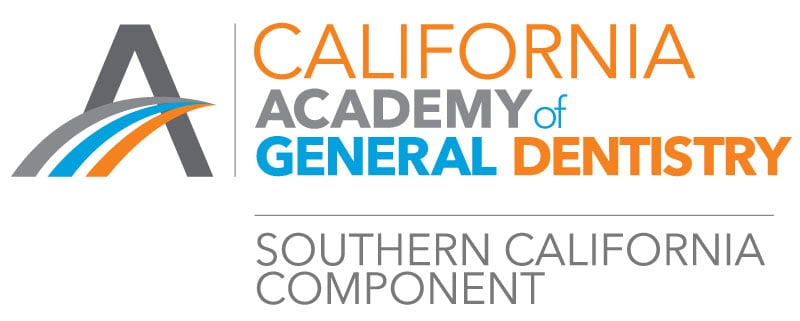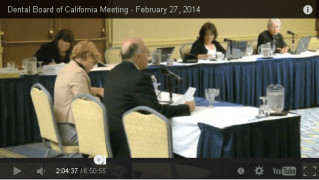- Watch how the AGD has enriched the careers of many dentists
- Do you CAD/CAM yet?
- Interim Therapeutic Restoration in Assembly Bill 1174: The entry point to mid -level
providers - CAGD past presidents Dr. Guy Acheson and Dr. Bill Langstaff testified on behalf of the general dentist regarding AB1174 at the Dental Board of California meeting on February 27, 2014
- Does it matter that the grass may be greener on the other side?
- CAGD Members serving in the AGD
Watch how the AGD has enriched the career of many dentists.
Interviews held at the CAGD Annual Meeting in January, 2014.
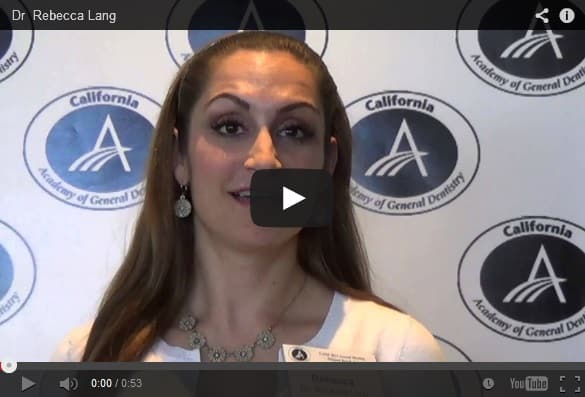
Do you CAD/CAM yet?
Know Your CAD/CAM Options
Samer S. Alassaad, DDS
Private Practice, Davis, California
There is no doubt that CAD/CAM restoration technology will dominate indirect restorations in the future. As research and case reports continue to show the quality of CAD/CAM restorations, as the options this technology offers continue to increase, and as it becomes more affordable, its popularity in private practices as well as in dental laboratories will continue to be on the rise.
Utilizing CAD/CAM technology offers many benefits; however, it has its own challenges. While CAD/CAM offers us full control over the end product and delivery time, it still has technical challenges – such as a steep learning curve. Knowing these benefits and challenges is crucial to helping dentists decide which model of CAD/CAM delivery method will work best for their individual practices so that they can utilize CAD/CAM systems to their highest potential.
Current CAD/CAM application modalities are:
In-office CAD/CAM:
Single-visit chairside: This is the most appealing option to dentists; it delivers indirect restorations in one visit. It eliminates making conventional impressions and temporary crowns, and the inconvenience for patients associated with coming in for a second cementation visit.
Multiple-visits with in-office-lab: This option requires conventional impression making and pouring models. The digital impression is then obtained from the model. This option can provide an easy transition from conventional to digital dentistry. It also helps to speed up the learning curve, thus accommodating the comfort level of some clinicians. However, additional staff time is needed in the in-office-lab to make the restorations.
In office CAD/CAM units can mill temporary as well as permanent restorations including inlays, onlays, full crowns, and implant restorations. Newer units can also mill bridges and can integrate with 3D implant placement designs. Currently, the most widely used restoration material is lithium disilicate.
Making the financial investment to acquire this technology requires an assessment of how many non-metal indirect restorations a practice performs monthly. This is essential to determining the financial feasibility of such a commitment; each manufacturer provides a “magic” number for how many restorations must be done per month to render this technology affordable. The elements for success with this technology are similar to all others; a commitment to continuing education and staff training, and an adherence to strict protocols are just a few.
Out-of-office CAD/CAM:
The dental office acquires only a digital impressioning unit and electronically sends impressions to an out-ofoffice digital lab. This option eliminates conventional impressions, sends digital impressions to other labs instantly, and allows for quick turnout of restorations.
Restoring a rotated tooth that has a cast metal post utilizing in-office CAD/CAM lab:
A patient presented with recurrent decay mesial of tooth # 12 (fig 1). After carries removal and tooth preparation (fig 2, 3), a conventional VPS impression was made.

The poured die stone and bite record were digitally scanned into a CAD/CAM dental system (E4D Dentist™
System, D4D Technologies) and the restoration margins were demarcated (fig. 4). The restoration was then
designed to the desired contour, occlusal and interproximal contacts (fig 5, 6), and milled out of lithium
disilicate glass-ceramic block (IPS e.max® CAD, Ivoclar Vivadent). A low translucency porcelain block was
selected to block the metal cast post.

The restoration was stained and glazed, and then it was etched, primed with a ceramic primer, and cemented
with self-adhesive resin cement (fig 7, 8, 9).

Commentary/Opinion
Interim Therapeutic Restoration in Assembly Bill 1174:
The Entry Point to Mid-level Providers
Guy E. Acheson, DDS, MAGD
Private Practice, Rancho Cordova, California
As of this writing, AB1174 has passed the California Assembly and is about to enter its journey through the California Senate. The legislation has parts which I believe are very beneficial to the people of California, but also has parts which conflict with what has been a defining element of what a surgeon is and removes a key element of protection of patient safety.
AB1174 allows the implementation of the dental outreach program known as The Virtual Dental Home to become a reality. The Virtual Dental Home is where dental auxiliaries go to remote sites such as schools, nursing homes, residential facilities, and federally designated underserved areas to complete dental examinations and create dental records on patients who can then have the records examined by a licensed dentist via computer internet connections. The dentist can then diagnose problems, create treatment plans and then instruct the dental auxiliaries at the remote site to complete preventive and therapeutic procedures as needed or to identify those patients who require the services of a dentist.
AB1174 permits the duty needed by the auxiliaries to allow this to be viable. Additionally, AB1174 requires the Medi-Cal/Denti-Cal system to reimburse the dentist for these examinations that are done without the dentist being in the physical presence of the patient.
On the other hand, there are parts that should be further examined such as allowing non-dentists to remove carious tooth structure prior to placing a temporary restoration, a technique called an Interim Therapeutic Restoration or ITR. The restoration is specified to be done with an adhesive material, usually glass-ionomer, and is to be presented to the patient/parents as a temporary restoration that requires an evaluation by a dentist for consideration for a more definitive restoration.
First, these restorations are going to be placed at remote locations on people who are unlikely to seek care from a dentist. These restorations are very likely to be considered final restorations by the patients/parents.
Second, as the oral surgeon who was my instructor during my dental residency told me, “you are allowed to do any dental procedures allowed under the law, but you should not start any procedure that you are not prepared to finish…including any foreseeable complications.” How many of us have started with conservative excavation of caries only to end up with a pulp exposure. As a dentist I can go forward with pulp capping or pulpotomy or pulpectomy to stabilize the situation. What will the non-dentist do? Remember, the nondentist is working remotely without a dentist present. They are working on people who have difficulty getting to a dentist and now a very urgent or emergent situation is easily created.
There are so many ways to improve the oral health of the public without putting the most vulnerable patients in our population at risk of harm by justifying it as “doing something.”
The future of the entire dental profession is at great risk due to the overproduction of dentists at great personal cost and risk to these new dentists. The economics are all wrong. Why are we allowing arguments of non-dental organizations to create a false impression of shortages of dental providers when the reality is that we are over-expanding our provider population in relation to both the number of providers per population and the economics it takes to educate and support dentists?
By allowing non-dentists to remove human tissue as part of the ITR procedure the primary distinction between the dentist/surgeon and non-dentists is broken. The value of the dentist in being able to provide the most complete treatment for patients is eroded.
CAGD past presidents Dr. Guy Acheson and Dr. Bill Langstaff testified on behalf of the general dentist regarding AB1174 at the Dental Board of California meeting on February 27, 2014:
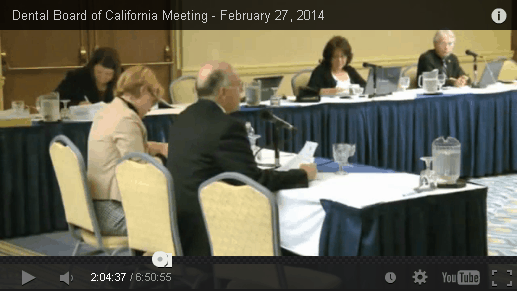
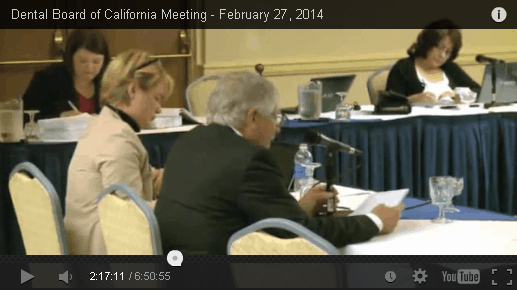
Does it matter that the grass may be greener on the other side?
Ryan Woo
UCLA Fellowtrack President
“Be yourself; everyone else is already taken.” – Oscar Wilde
It was fall quarter of the second year when I entered the dreaded Complete Dentures class. Glancing over to my bench mate, I saw that he had a tidy desk with neatly arranged instruments. Not bad. As we began to take impressions and pour stone models, my desk slowly became a vortex of mess; all the while my bench mate’s area remained pristine. We culminated the session by fabricating record bases. My record base came to a salmon hue with some rough edges and wrinkles – altogether decent for a novice. Taking one last look at my bench mate’s desk just to confirm my record base was superior, I noticed nothing there! All that remained was a beautiful coral pink record base: smooth, thin, and consistent. Apparently he even had time to clean up his desk….must have been beginner’s luck.
Dental school has provided me with 100+ new classmates and friends, but with that came its own challenges. Imagine: to your left a former competitive jump-roper. To your right, someone that creates the most beautiful artwork, it makes you wonder why he is even in dental school. The list goes on with magicians, NCAA athletes, and previous business owners. Suddenly, you begin your pity party, feeling both untalented and inadequate.
Learning how to be comfortable with myself and resisting the urge to incessantly compare myself with others has been the greatest challenge of dental school. My path inevitably collides with uniquely motivated and talented classmates daily, and I can’t help but compare with myself. But what’s the point? To feel good when I get a higher test score than my neighbor? Or to peer from afar, loathing the success of someone else with slanderous thoughts? Whether it manifests itself as pride or envy, it hinders us from enjoying the blessings we have been given.
Over the years I’ve learned that comparing myself to others often cripples me from thriving both educationally and socially. Sometimes we spend so much time lamenting over the meanderings of others that it distracts us from achieving goals or even prevents us from being happy. By proactively refusing to measure myself to the standards of others, I feel freed from the expectations I inherently value through comparison. Being content and passionately following my aspirations at my own pace has often led to some of my best work. Of course I may never be half as neat as my bench mate or even be able to jump rope in Double-Dutch, but that’s okay. Learning how to cultivate my own skills without looking to my left or right has proven to be fruitful.
A good litmus test has been asking myself whether I can fully rejoice with my peers in their success rather than burn with envy. Try it: it may work for you too! So the next time you see someone driving that car you’ve always dreamed of or having the salary you’ve always wanted, just smile and be happy for them.
CAGD Members Serving in the AGD
